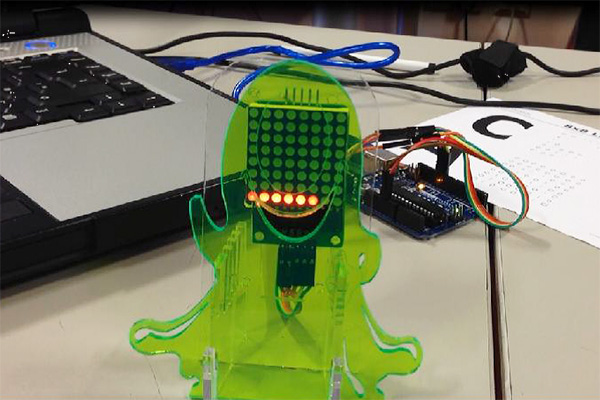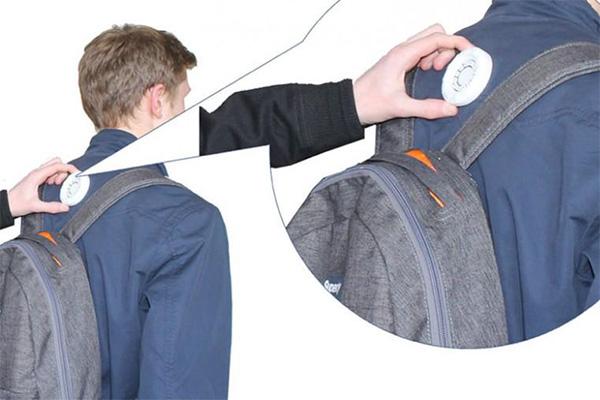We are going through one of the greatest times in technology in our life time. From virtual reality, to 3D printing to google street cars, the opportunity to create Smart products – those that can sense and react to their users and environments - is unique in many of our lifetimes. A lot has been written on this subject and a particularly good starting place on the economic impact of disruptive technologies is McKinsey report.
Black Country Atelier (BCA), a leading education and innovation team has been working with the RSA and its group of RSA Academies to equip teachers and students with the skills needed to exploit these opportunities. Here is our start of term report.

Disrupting schools: can cross curricular Design and Technology lead the way?
BCA enable students and teachers to apply micro-manufacturing technologies like 3D printing and microcontrollers in a rich variety of contexts. Above is a Smarties Colour Sensor and Counter that BCA developed for cross-curricular STEM events, in this case integrating Arduino code, 3D printing, laser cutting and electronics. Part of BCA’s goal in education is to connect 'Smart' physical projects for young people to curriculum areas that teachers can explore.
This year, the appetite for technologies such as 3D printing in schools grows as strong as ever. In schools BCA work with, it is exciting to see micro-manufacturing technologies embraced by teachers across the curriculum.
In fact despite the EBacc requirements for students to study a pre-defined set of ‘academic’ subjects, at the potential exclusion of the arts and technology, many schools recognise the need for a richer more rounded education. A recent survey of head teachers showed they would rather lose their Ofsted Outstanding status than apply EBacc to all their students.
Our experience is this reluctance to narrow the learning experience reflects a growing recognition that schools need to offer a broader education to prepare young people for a those modern technology distributions – and maybe even cause some of their own.

Part of BCA projects’ implicit learning outcomes is to reveal the design, engineer, prototype and testing processes inherent in modern design. Here BCA helps students and teachers design and 3D print chassis and body for Scalextric project. This project was featured at the National Slot Car Festival.
In schools where BCA worked this year, we have helped teachers to implement 3D printing and Smart technologies across the curriculum. For example, microcontrollers are used to control robotics in DT; however microcontrollers are also used to detect chemicals and in Science giving those same robots ‘intelligence”.
Just as we are seeing a rich cross-fertilisation of ideas in modern technology companies, we see teachers actively embracing a cross-curricular multi-disciplinary STEAM based approach to learning. The results are richer, and students report a deeper appreciation of why their learning is relevant.
Yet the one subject area that is the natural home of this cross-curricular approach to learning is also one of the most in danger of being relegated to the second tier.
Bridging the world of science and maths with the world of creativity to solve complex problems and needs has always been the great strength of a successful Design and Technology (DT) department. But DT as a subject still finds itself being seen by many as home of woodwork and expensive machinery, with some departments being threatened with closure altogether.

Above is an animated emoji integrating LED matrix display and laser cut panels.
In part this is thanks to the EBacc rules but this is only part of the problem. DT as a subject has failed to clearly articulate its values and its greatest strengths, at a time when the opportunities and need for a cross-discipline approach to learning is at its greatest.
Which subject has to understand and actively apply maths and science in its projects while also considering visual aesthetics?
Which other department has to teach electronics and coding while also asking students how these can be make everyday products more interactive and engaging.
DT must articulate those values - one based on more agile cross-discipline approach to product design and manufacture – if it is to shake off its reputation and old stereotypes as the expensive ‘dirty’ room to run.
The problems that scientists, engineers, designers have to solve are no longer simple; scientists working together with designers and engineers create solutions for products we didn’t even know we needed. Many modern product development processes take creativity and scientific rigour – integrated together. This is something that DT has always instinctively, if not explicitly, championed.

Above is a Wearable Technology project by students collaborating with BCA. BCA provide micro-manufacturing templates that would support users developing their own Smart projects. Students integrate LED display, accelerometer and 3D printing to create a brake light for cyclists.
Perhaps DT departments should embrace the disruption that technologies like 3D printing are causing in big business and apply it to their schools. At a time when the greatest innovations in the real world come from mixing disciplines and experts from different backgrounds together, not separating them into neat silos, could DT be the champion of a multi-disciplinary STEAM approach in schools?
__
What’s your experience of DT?
If you’re a teacher, is your department growing or do you need support to rearticulate its role within your school?
If you’re a head teacher, would you like to implement a cross-curricular STEAM subject?
If you’re an RSA Fellow or a school governor, how can you bring your experiences to support your local school and share your experiences of the skills needed for your industry?
We would like to hear your feedback.
----
Jing Lu is the founder of Black Country Atelier (BCA) – an education and innovation company working with teachers to equip young people with modern skills. It is a leading provider of 3D printing and Smart product design curricular and training. BCA is working with the RSA and Comino Foundation on a digital fabrication projects with the RSA’s group of Academies bringing digital fabrication learning into the classroom. It is working across DT, computing and art.
Working with the RSA and the D&T Association, we are championing a STEAM based DT and have joined in a call to recognise the importance of the subject in the curriculum.
To contact Jing about this blog, please email: jinglu@blackcountryatelier.com

Be the first to write a comment
Comments
Please login to post a comment or reply
Don't have an account? Click here to register.